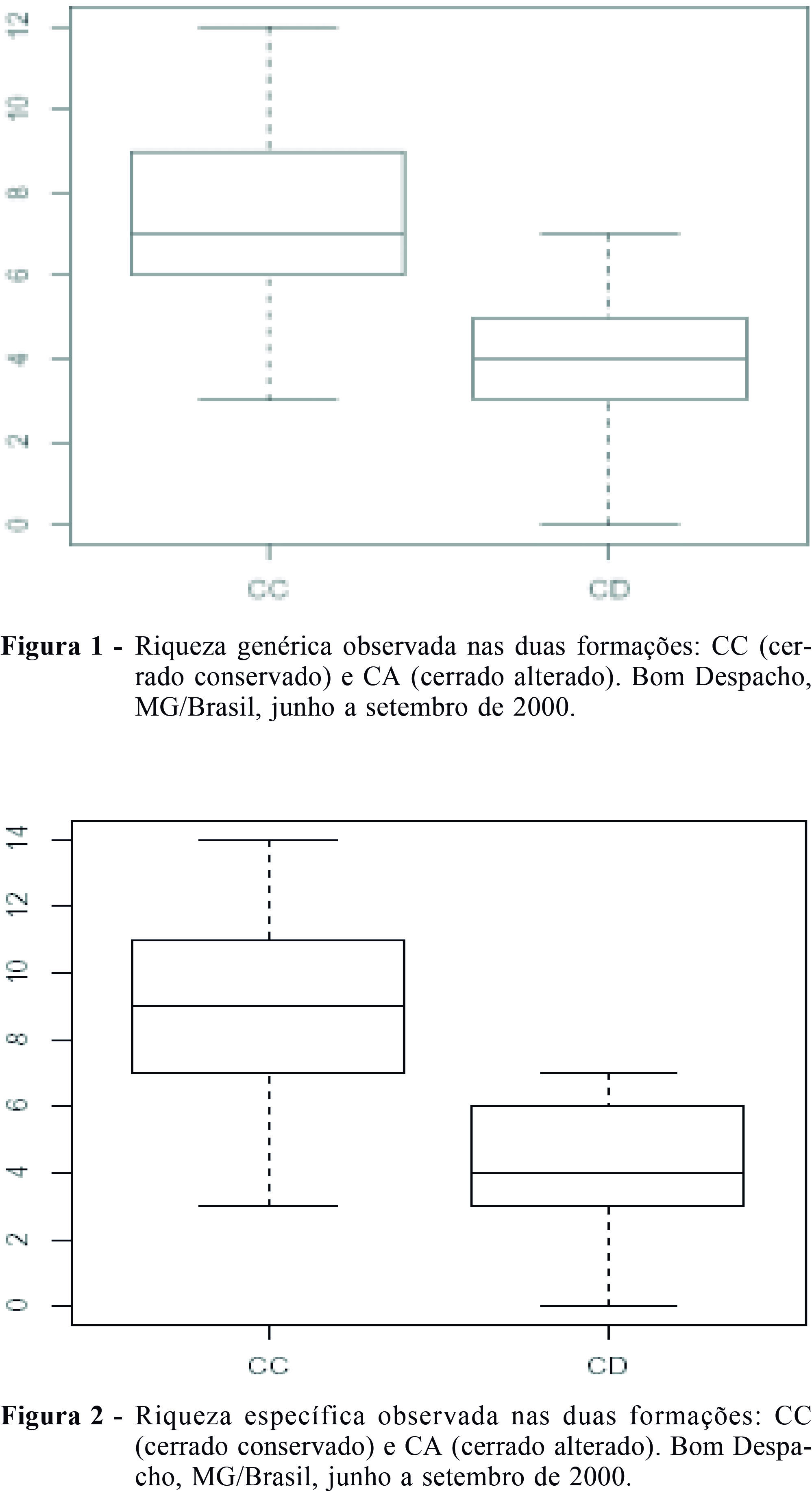Ant communities (Hymenoptera: Formicidae) of the leaf-litter in cerrado “stricto sensu” areas in Minas Gerais, Brazil
DOI:
https://doi.org/10.35699/2675-5327.2003.21859Keywords:
Savanna, Neotropical Region, Insecta, diversity, degradation, Winkler trap, litterAbstract
The ant communities in both a native cerrado remnant in good preservation conditions and an anthropized area have been studied at Bom Despacho, Minas Gerais, Brazil. The Winkler technique was used to extract the litter ants, taking out 50 one-square meter litter samples in each area. Sixty-seven species were collected in the well-preserved cerrado area, and 45 in the anthropized one. Important differences were observed between the cerrado remnant and the degraded area, mainly regarding the generic and specific richness. Species richness (Chao2 index) in the native area proved to be higher, while the dominance, evaluated by the Berger-Parker index, was 0.11 (for Solenopsis sp.1) in this area, and 0.13 (for Pheidole fallax) in the degraded one. The dispersion index (P05) showed that the native community is more homogenous that of the degraded cerrado. The Myrmicinae were most frequently found (49 species), followed by the Formicinae (17 species). Camponotus and Pheidole had the largest species numbers (10 for each) among all genera.
Downloads

Downloads
Published
How to Cite
Issue
Section
License

This work is licensed under a Creative Commons Attribution-NonCommercial 4.0 International License.
